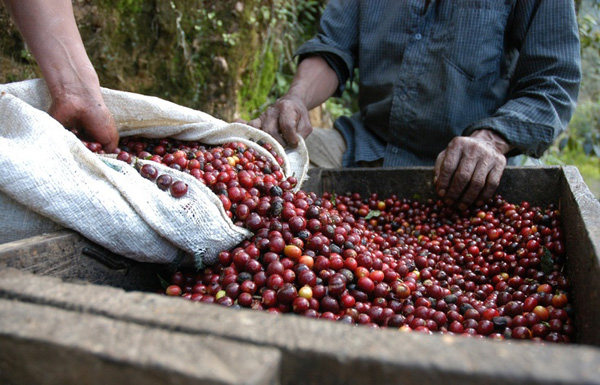Where is coffee distributed in the world? Arabica beans and Robosta beans
There are two kinds of coffee beans in the world, Arabica beans and Robosta beans. Coffee was first discovered and eaten by Arabs chewing whole coffee and tasting it as a physical supplement for long-distance travel.
Generally speaking, there are two kinds of coffee beans in the world, Arabica beans and Robosta beans. Coffee was first discovered and eaten by Arabs who chewed whole coffee and tasted it as a physical supplement for long-distance travel.
Where is coffee distributed in the world?
North America: Cuba is a well-known coffee-producing country, grown in the Central Mountains, and in this rare land crystal and other minerals are also produced, named Crystal Mountain. The coffee produced on Crystal Mountain is close to the Blue Mountains of Jamaica. because the climate, geography and other natural conditions are similar, it is often talked about and compared with the Blue Mountains. Cuba Crystal Mountain represents coffee is Amber Coffee, Crystal Mountain Cubita Coffee is Cuba's top coffee, known as the unique Caribbean flavor coffee.

Africa: C ô te d'Ivoire is one of the three largest coffee producing countries in the world, and its southern region produces Robusta original medium coffee with the largest production in the world. Ethiopia is a country with a history of coffee, and the name coffee came from in the southwest.
Asia: the coffee beans produced in Tamirna in southeastern India, with small grains and small production, are high-grade products of India. Indonesia is a large coffee producing country, the island of Sumatra is rich in Mantenin, granulated large beans are very hard, Mantenin was once a world-class gourmet coffee, but only the Blue Mountains did not appear before the market. Yemen, once famous for its rich mocha, is not as popular as it was in today's era.
Central and South America: Jamaica has become a topic of conversation because of coffee. Blue Mountain, which produces the best, once beat a variety of famous coffees. Because of its low production, it is usually mixed with Blue Mountains and other coffee beans. Brazil is known as the country of the coffee continent. The world's most important coffee producing area accounts for 1/3 of the world's total output. It is characterized by moderate acidity and strong sweetness. Colombia is the second largest producer after Brazil. Hawaii also produces stronger coffee because of its unique natural environment and climate.
Important Notice :
前街咖啡 FrontStreet Coffee has moved to new addredd:
FrontStreet Coffee Address: 315,Donghua East Road,GuangZhou
Tel:020 38364473
- Prev

How to make a best-selling summer drink, iced coffee?
With the pursuit of taste, cold coffee has gradually become a special drink, which is deeply loved by people who like to drink it. Love iced coffee, mostly because of the heat, hot coffee can not calm the inner restlessness, iced coffee, its temperature changed a little sweet of the original coffee, played down the bitter taste, sweet aftertaste spread infinitely, followed in the mouth
- Next

How to taste American coffee correctly? Observe its color
American coffee is a kind of coffee, can be described as the most common coffee, is indispensable in American life, while for Europeans, this light coffee is not very palatable. It is made of black coffee made by a drip-filter coffee pot, or by adding a lot of water to Italian concentration. it is light and clear, slightly transparent, and the usual extraction time is 45 minutes.
Related
- Beginners will see the "Coffee pull flower" guide!
- What is the difference between ice blog purified milk and ordinary milk coffee?
- Why is the Philippines the largest producer of crops in Liberia?
- For coffee extraction, should the fine powder be retained?
- How does extracted espresso fill pressed powder? How much strength does it take to press the powder?
- How to make jasmine cold extract coffee? Is the jasmine + latte good?
- Will this little toy really make the coffee taste better? How does Lily Drip affect coffee extraction?
- Will the action of slapping the filter cup also affect coffee extraction?
- What's the difference between powder-to-water ratio and powder-to-liquid ratio?
- What is the Ethiopian local species? What does it have to do with Heirloom native species?

